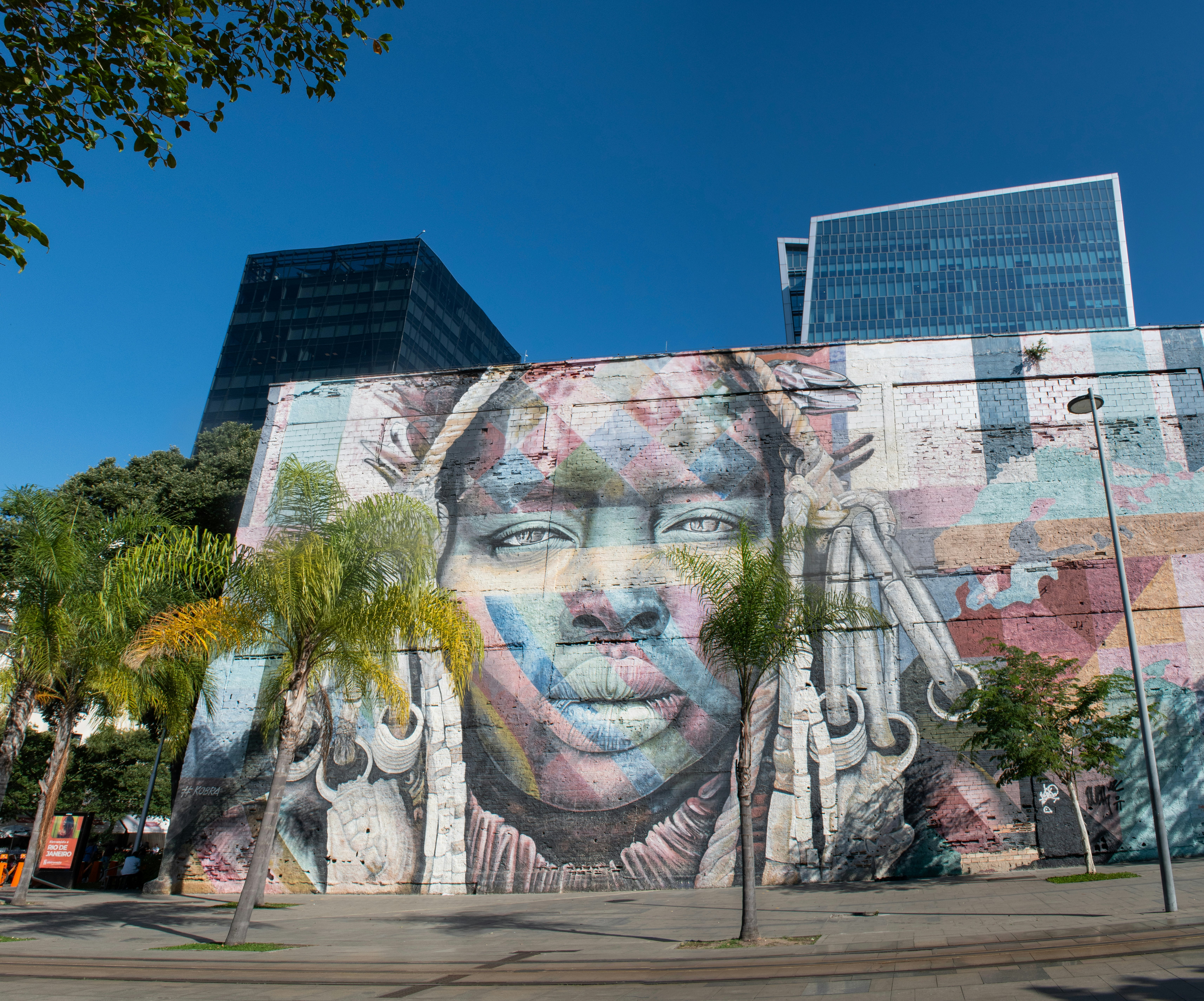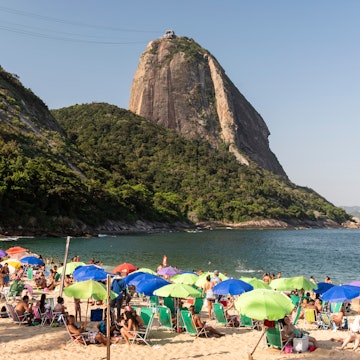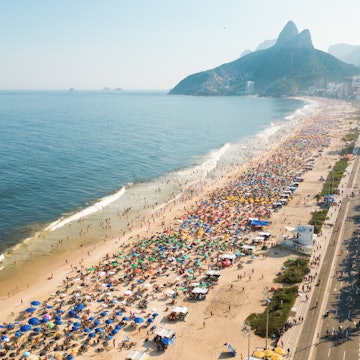

These are the best things to do in Rio for free. Aleksandar Todorovic/Shutterstock
In the Cidade Maravilhosa (Marvelous City) of Rio de Janeiro, visitors have endless ways to spend their money; whether you spring for the best seats in the Sambadrome or splurge on a multi-flavor caipirinha sampler, it never hurts to have a few extra Brazilian reals. But even while you're reaching for your wallet, there are lots of ways to enjoy the best of Rio for free.
From plentiful natural areas surrounding the city to beautiful parks and gardens within the city limits, Rio offers an array of free attractions to fill up your itinerary without going over budget. Here’s our guide to the top free things to do in Rio de Janeiro.
1. Take advantage of the free museums
Rio de Janeiro is not immune to its bouts of rainy skies, which means you will need to plan for some indoor diversions if the weather is not cooperating. Thankfully, this can be good for your budget since the city is full of free museums and exhibits that offer the opportunity to learn more about Brazilian history and culture.
For a bit of art and architecture, head to the Centro Municipal de Arte Hélio Oiticica, a modern museum set inside the bones of a neoclassical building from the 19th century.
At the Instituto de Pesquisa e Memória Presto Novos, you can learn the story of a run-of-the-mill house renovation that led to the archeological discovery of the burial site for enslaved Africans. The house is now a museum that sheds light on the history of slavery in Brazil.
There’s also the small Museo do Indio, which has an impressive archive of photographs documenting the Indigenous tribes of Brazil, however, some areas are temporarily closed for renovations at the moment.
Local tip: Other museums in Rio that normally charge a fee offer free entry days. These rules can fluctuate, so it’s best to check with museum websites for more.

2. Soak up the sun on the beach
Bring a towel — maybe consider buying a cheap umbrella to save on aloe vera costs later — and set yourself up for a free day on Copacabana or Ipanema.
There are kiosks on the beach that will give you a seat and umbrella, but you’ll have to buy food from them. Of course, you’ll have to resist the temptation of the many vendors who will pass by selling everything from sunglasses to fried cheese, but if you come prepared with everything you need for a day at the beach, you can save quite a bit of money.
Planning tip: To save on your food budget, head to the grocery store and fix your own lunch and bring your own drinks.

3. Visit Lapa for the Escadaria Selarón
This staircase has become an enormously popular attraction in the past few years as visitors come from all over to pose in front of the colorful tiles. Embrace your inner influencer and grab a photo on the steps of this mosaic work created by the Chilean artist Jorge Selarón.
While there, walk around the bohemian neighborhood of Lapa and see other sights like the Arcos da Lapa (Lapa Arches). Keep the colorful tour going with a free visit to the Metropolitan Cathedral, where you can admire the impressive stain-glass work hiding inside in plain sight within the church’s neo-brutalist exterior.
Planning tip: While you’re walking around enjoying the free sights of Lapa, you’ll probably get hungry. To get the best bang for your buck, pop into one of the buffet-style restaurants where you can pay por kilo (by the kilogram).

4. Admire the shelves at the Royal Portuguese Reading Room
Book lovers must make a pilgrimage to this iconic 19th-century library that’s dominated inspirational library vision boards around the world. With three levels of floor-to-ceiling books, it’s one of the city’s most beautiful interiors and entry is completely free to enter.
Peruse the shelves or bring your own book for a very aesthetic reading session in the comfort of Rio’s bibliophile paradise.
Planning tip: This attraction has become Instagram-famous, so plan to visit right when it opens at 10am if you want to avoid the crowds. Note that it is closed on Saturdays and Sundays.

5. Tour the street art scene
Lapa gets a lot of attention when it comes to public art, but you can find murals in just about every neighborhood in Rio. Mark some of the most famous street art sites and fashion your own tour of the city by way of the most iconic pieces from both Brazilian and international artists.
A natural place to begin is “Ethnicities” on Boulevard Olímpico where Kobra, probably one of the most prolific Brazilian street artists, has created one of the world’s largest murals at 190m in length.
Nearby on Avenida Rodrigues Alves, you can also spot a piece by Brazilian artist Rita Wainer depicting her typical motif of a woman with long flowing hair. Further down toward Porto Maravilha you can explore the city’s developing art district, where murals line Avenida Rodriges Alves.
Here, you can also find the mural “Visions of Resistance, Dreams of Liberty” by the artist ACME. It depicts Brazilian and American civil rights leaders side by side and is located a few blocks away from Cais do Valongo, which was the historic entry point for enslaved Africans, a somber site that is also free to enter.
Keep your eyes peeled and read up on some local artists and you’ll enjoy hunting artwork all over the city.
Planning tip: The nature of street art is change, so there are always new murals going up (and sometimes getting painted over). If you want to find the latest info about new artwork in Rio, follow local artists and @portomaravilhaoficial on Instagram, or sign up for a street art tour.

6. Sync up with the samba beat
During Carnival season, it can seem like every stone in the city is emanating a samba beat as Rio celebrates the world’s largest party from the blocos (street parties) to the Sambódromo. This isn’t the only time of year you can experience Rio’s most iconic dance, though.
There are a few places where you can pay for a lesson, but if you want a free activity, keep your eye out for the regular shows that take place around the city in popular samba bars like Bip Bip in Copacabana or Bar do Omar and its fabulous harbor views in Santo Cristo.
Usually, you have to pay a small entrance fee if there’s live music, but you can still get lucky if you’re willing to do some sleuthing. For example, the Beco do Rato in Lapa occasionally has free entry days that it announces on its Facebook page.
Local tip: If you do visit during Carnival (or even a few weeks before), you can attend technical rehearsals for free at the Sambódromo.

7. Take a hike
If you’ve packed your walking shoes, you can skip the expensive tours and cable car rides and hike up to some of the city’s most iconic peaks. For example, you can easily walk up to the lower peak of Sugarloaf Mountain via the 2km Morro da Urca route.
If you’re looking for more of a challenge, you’ll find plenty of trails in the Parque Nacional da Tijuca including the Corcovado Trail – a steep hike that will lead you from Parque Lage in the Jardim Botânico neighborhood to Christ the Redeemer.
Pedra Telegrafo is another beautiful Rio hike that has been gaining popularity, but note that you will need to travel 90 minutes outside the city center to get to the trailhead in Barra de Guaratiba. It’s a long drive and a short trail, but in the end you’ll arrive at the beloved Pedra Telegrafo, a rock that’s in the perfect position for creating a death-defying photo moment with zero real risk involved (here you can trick friends and families back home and frame the photo so it looks like you’re hanging off the ledge, omitting the very safe landing just a few inches below).
Planning tip: Before embarking on any trail, always ask around about the latest conditions and check online for reviews by recent hikers to see if there is any pertinent information that may affect your hike.

8. Find natural beauty in the parks and gardens
If breaking a sweat and fighting off mosquitos isn’t what you had in mind for your Rio vacation, you can still enjoy the city’s flora and fauna for free with a visit to one of its lovely green spaces.
Parque Lage at the base of the Corcovado hike, in the Jardim Botânico neighborhood, will give you a taste of the forest and a beautiful backdrop of nature framing the 20th-century mansion, which was once the residence of a wealthy industrialist and a world-renowned opera singer.
Other free parks in the city include Parque do Flamengo, which spreads from downtown Rio through the neighborhoods of Glória, Catete, and Flamengo. Its sprawling grassy lawns, gardens, and many paved trails that attract cyclists and rollerbladers — this is probably the best place to see the famously active Cariocas (Rio residents) in full sport mode.
In Santa Teresa, Parque das Ruínas, so named for its collection of abandoned brick mansions that once hosted lavish parties where some of Rio’s great artists gathered.
Local tip: Rio’s Botanical Garden is one of the most beautiful parks in the city – the whole neighborhood is even named after it – but unless you’re a child under 5, you’ll have to buy a ticket. If you’re an adult over 60 though, you can get in for half-price. It’s a common discount in Brazil so make sure to always ask for the idoso (senior) ticket if this applies to you.
This article was updated from Lonely Planet’s Brazil guidebook, published in October 2025.














